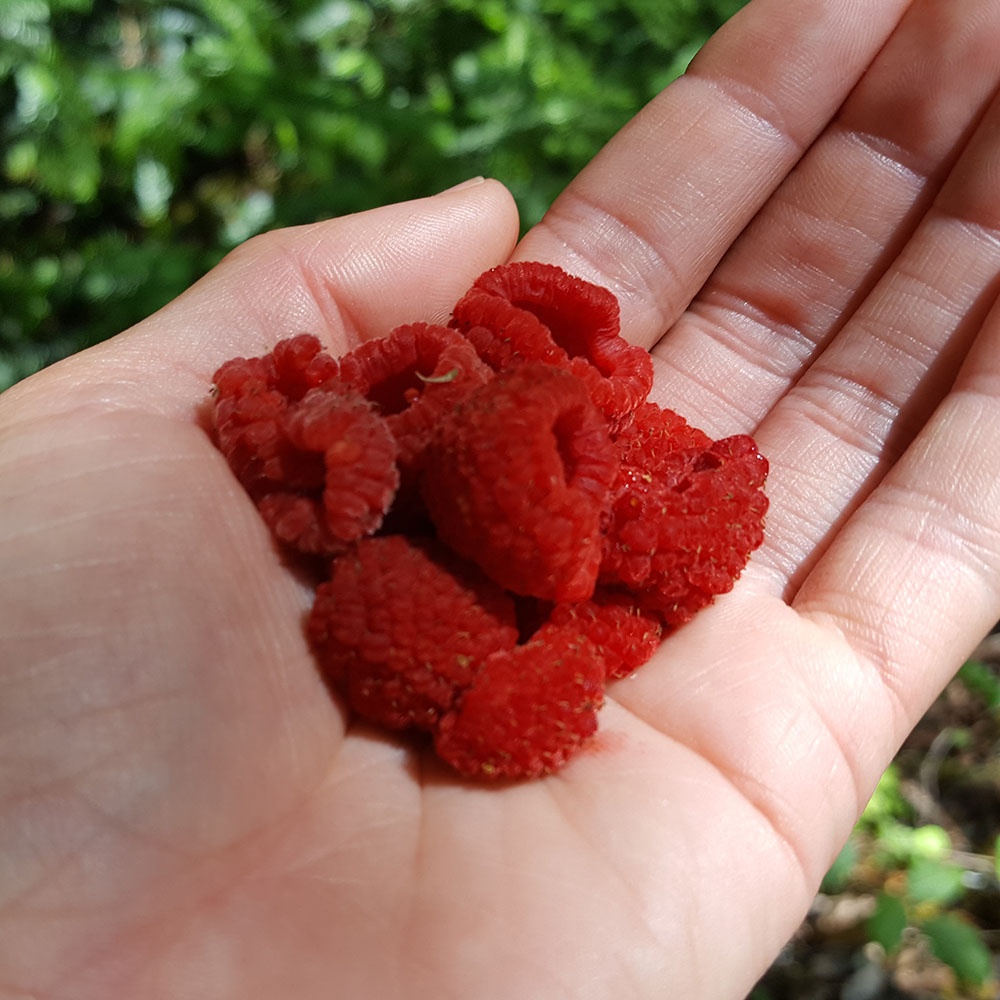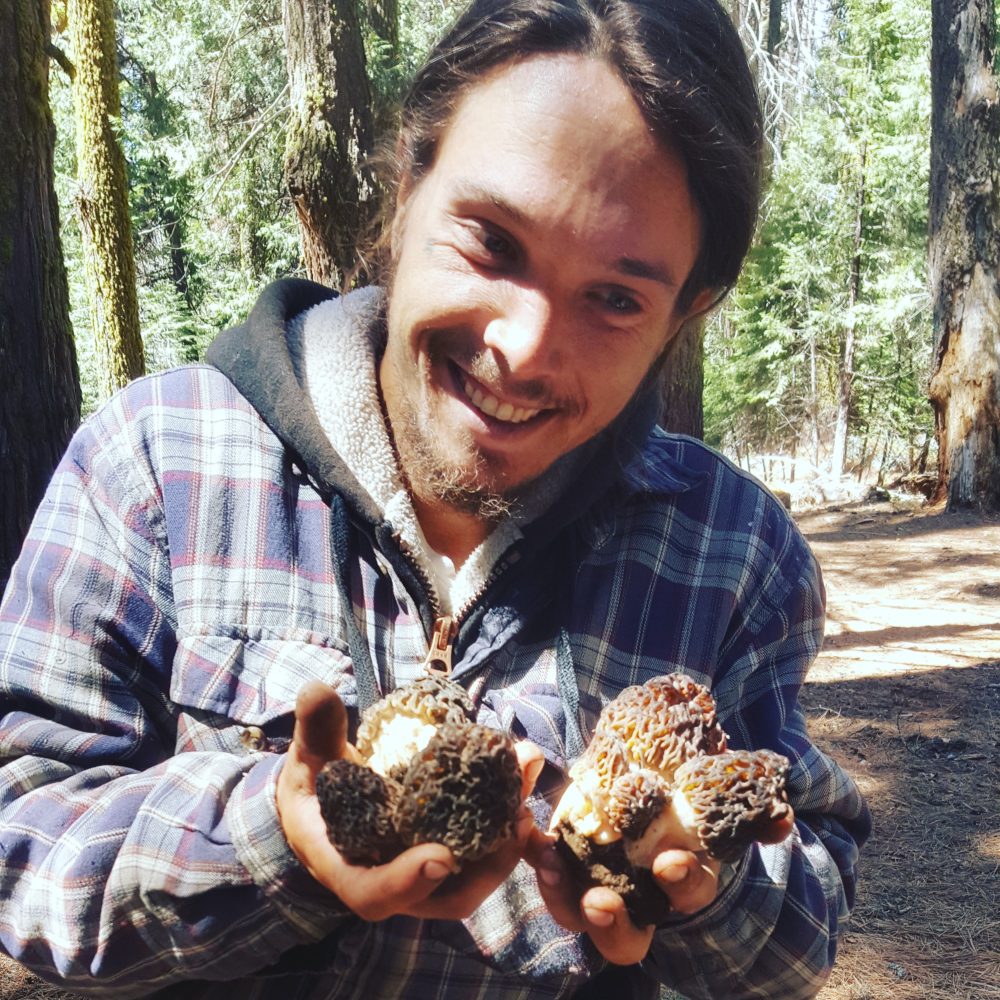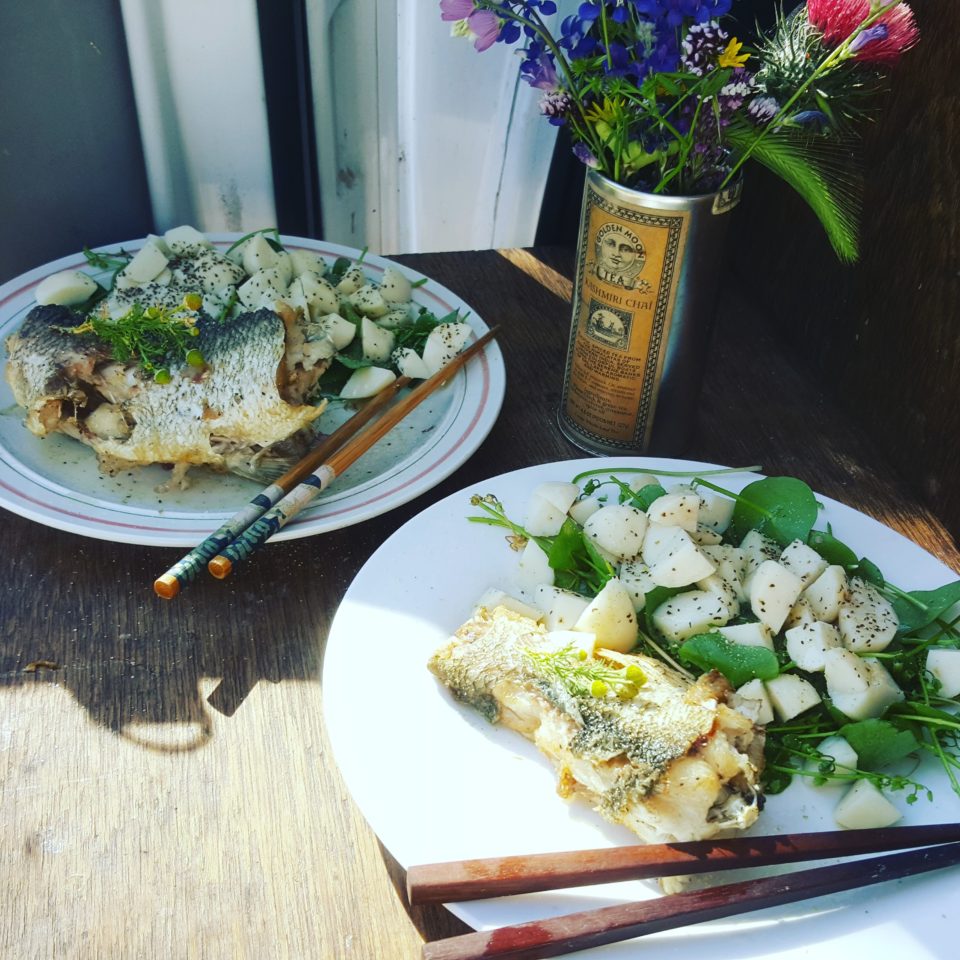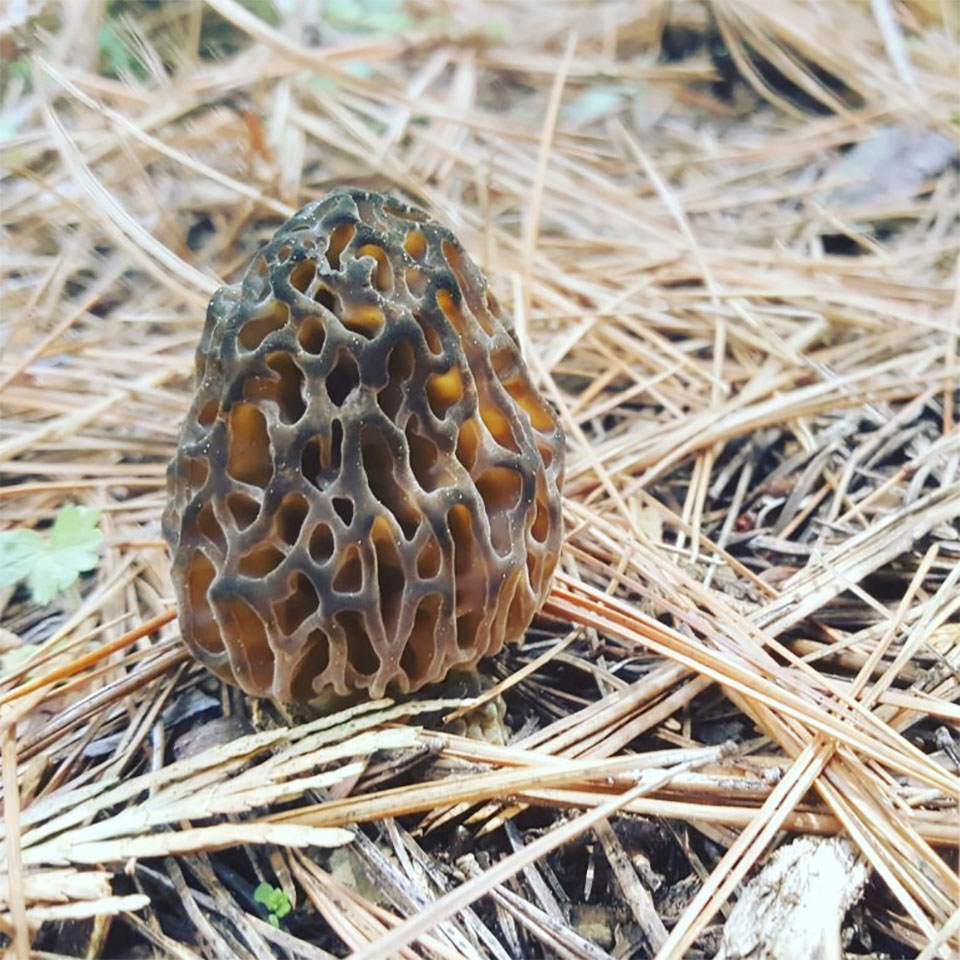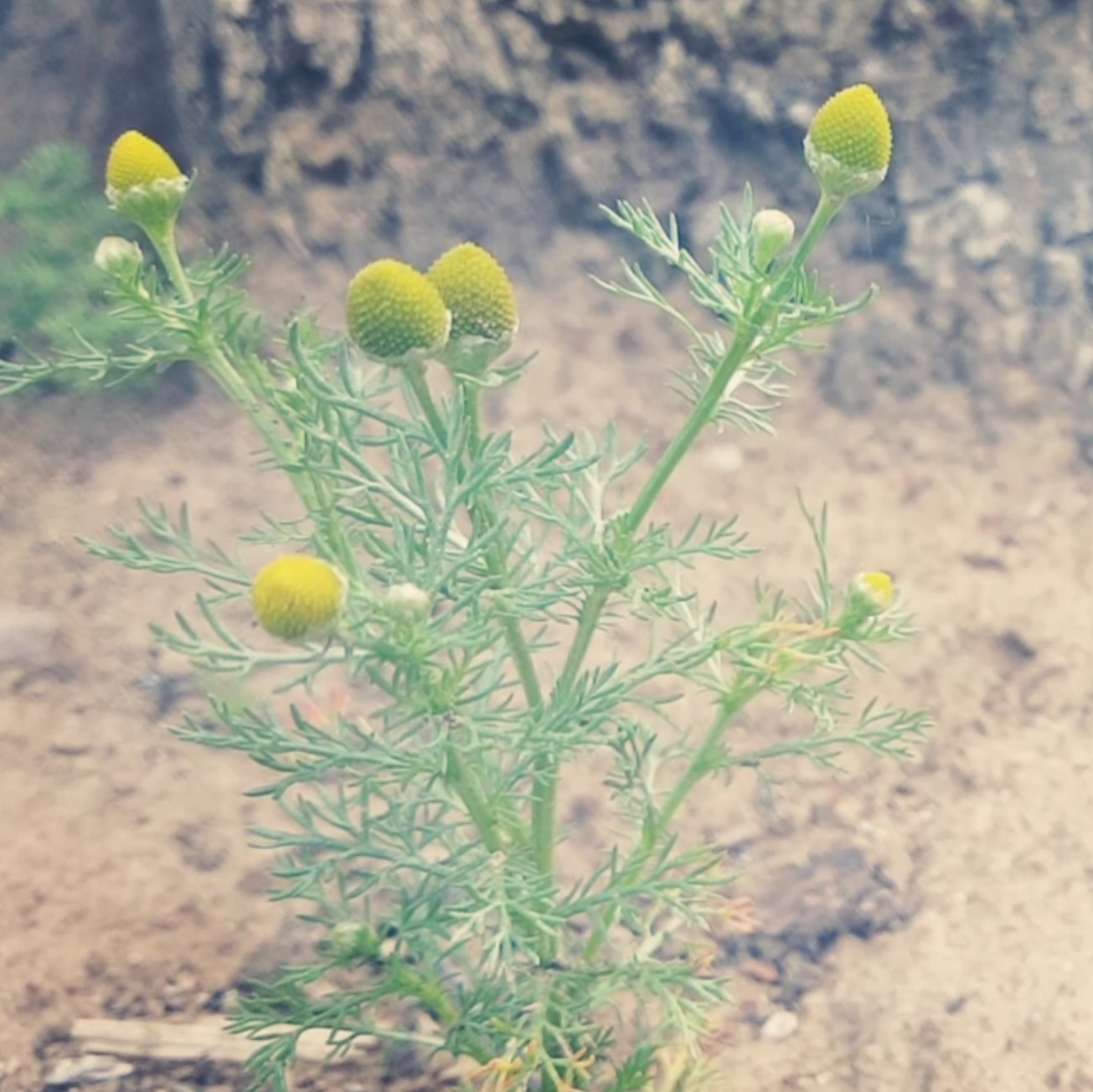
Wild Chamomile, Matricaria discoidea, commonly known as pineappleweed, and disc mayweed is an annual plant native to North America and Northeast Asia but which has become a cosmopolitan weed. It is in the family Asteraceae. The flowers exude a chamomile/pineapple aroma when crushed. They are edible and have been used in salads (although they may become bitter by the time the plant blooms) and to make herbal tea. Pineapple weed has been used for medicinal purposes, including for relief of gastrointestinal upset, infected sores, fevers, and postpartum anemia. [1]
My son’s godmother introduced me to wild chamomile (pineappleweed) last spring on a trip to Mercey Hot Springs. We were camping in their campground and this wonderful plant was abundant on all the hard packed soil. The aroma filled the air of pineapple and sweet apples. I didn’t actually try it until after my son was born. He would try to put everything in his mouth, so we’d look for things that were safe and healthy for him. As soon as he started walking, he would spot patches of pineappleweed, pick them, and chew on the flower heads. I’d follow him around and started harvest the flower heads for tea.
Characteristics of Wild Chamomile:
- Small weed growing close to the ground, no taller than 4 inches
- Yellow-green, cone-shaped flower heads without petals
- Reminiscent of chamomile
- Sweet smell when crushed
- Fine-textured, pinnate leaves
- Growing in compacted or rocky soils around buildings and especially driveways and areas where vehicles and tractors are parked – but not in disturbed areas completely surrounded by grasses and other weeds (in other words, we found it where humans have changed the soil the most with their structures and access roads)
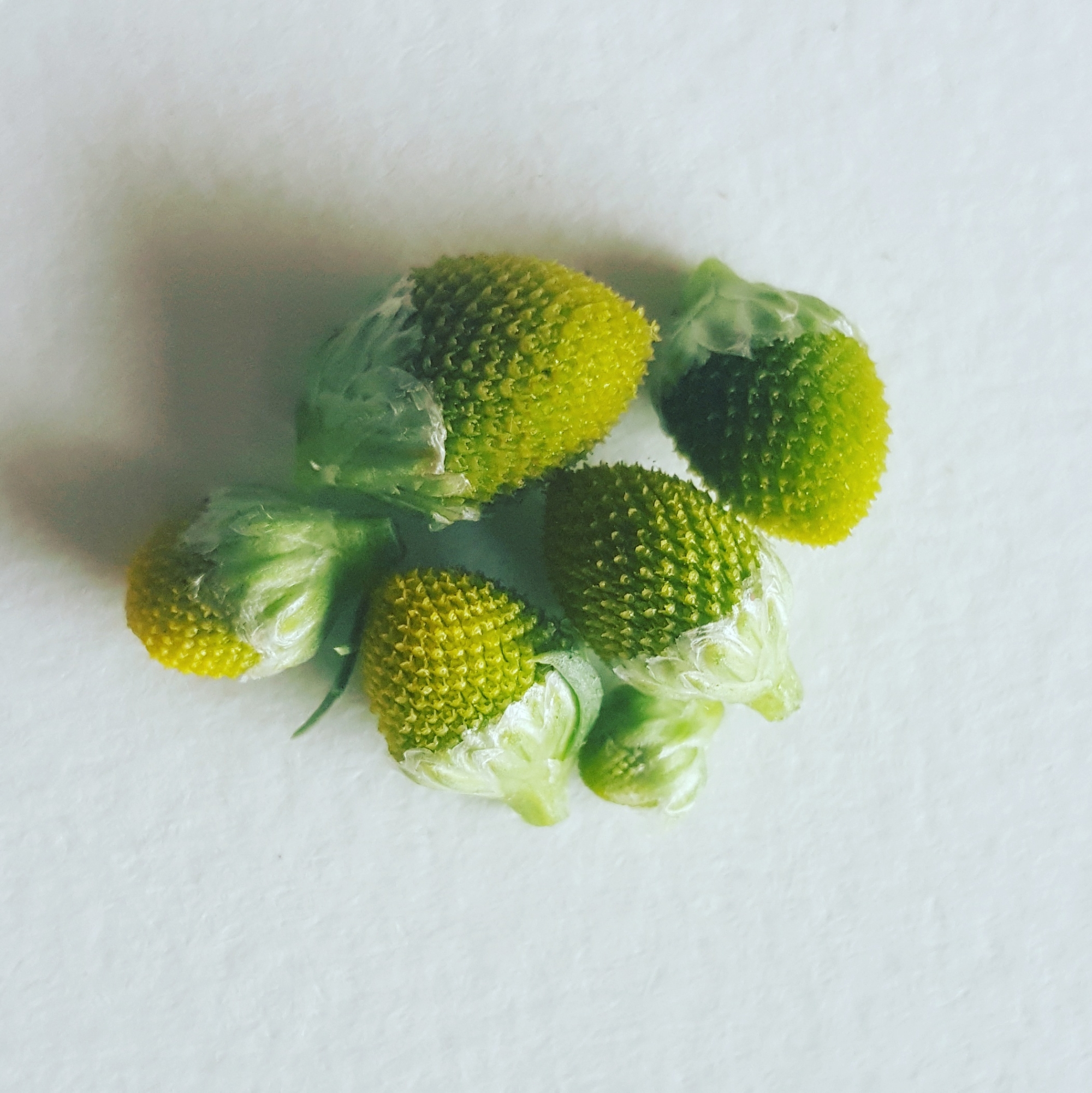
Pineappleweed flower heads
Medicinal Uses of Pineappleweed
Pineappleweed has be used as an natural herbal remedy to treat a wide variety of medical ailments for millenia by the Native Americans. It is still used widely in the United States, however, modern medicine has made it an inferior option in many situations. Pineapple weed flowers can be crushed and made into tea which acts as a sedative helping individuals suffering from insomnia and anxiety. Further, pineapple weed tea can be used as an analgesic taken for stomach pains, antidiarrheal and relief from gas or bloating. The seeds of pineapple weed can be used as a disinfectant or dermatological aid to heal infected sores. Additionally the plant tops can be used as an antihemorrhagic by individuals who are spitting up blood.
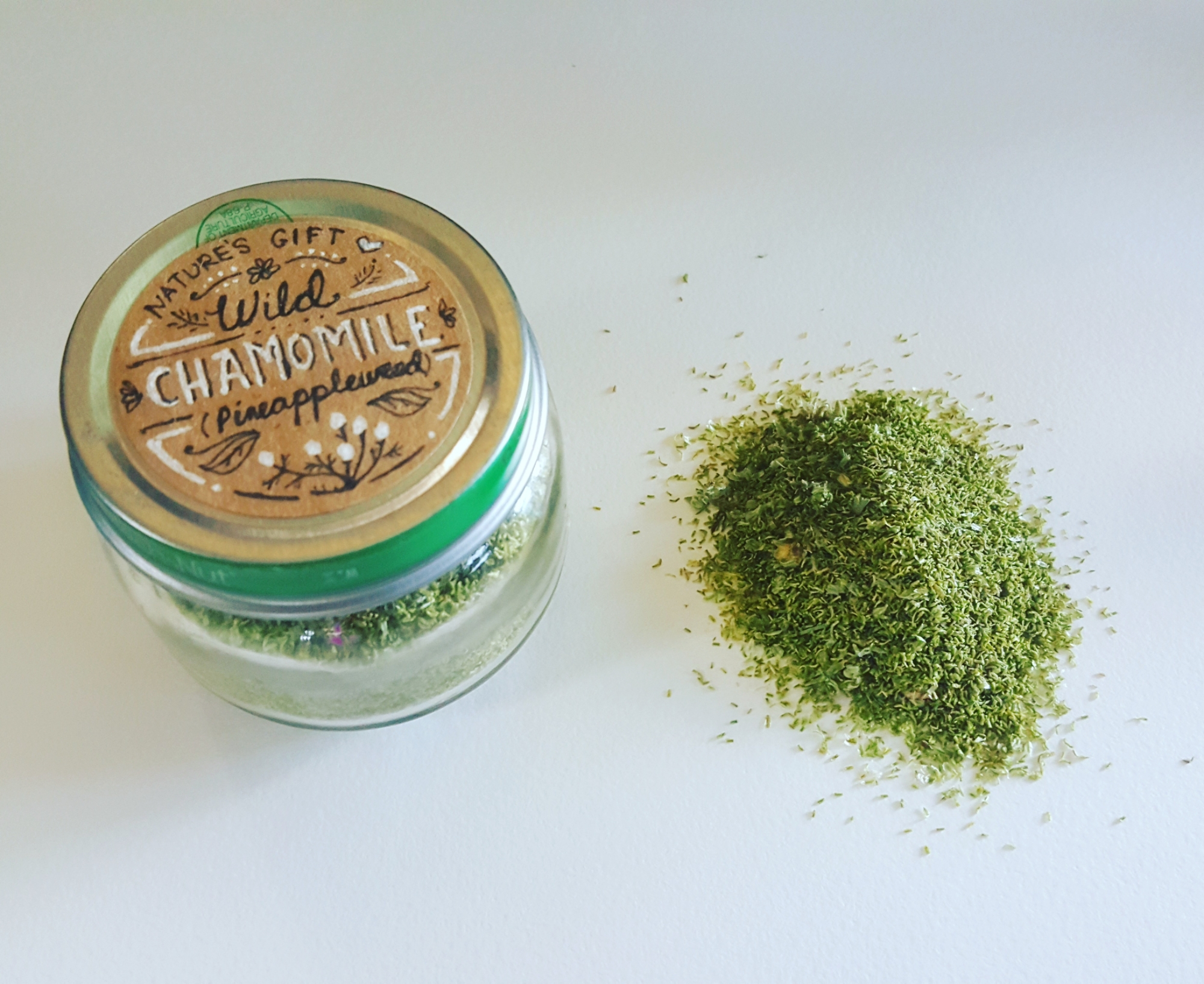
Dried Pineappleweed
How to dry Pineappleweed
- Clip the flower heads (you can pull the whole plant up, but I like to clip the large heads and leave the smaller ones to grow for harvest another day).
- Place about 1/2 cup fresh pineappleweed heads in an open coffee filter and hang in a cool, dry spot.
- Shake filter a couple times a day for 4-5 days or until the flowerheads are dry and crumbly.
- Once dry, crumble the heads between your fingers. You’ll notice the little seeds will fall off easily.
- Cut a tiny hole in the bottom of the filter and shake gently into your storage container.
- About 2 cups of flower seed heads filled this 2.5 oz baby jar.
How to Make Pineappleweed Tea
I love using Wild Chamomile in my infusions. It adds a wonderful flavor and is subtly relaxing. You can use them fresh or dried. To brew them fresh, simple take a handful of flower heads and place them in a cup or pot and pour boiling water over top. Let them sit and steep for five to ten minutes. Strain the flowers from the tea. I use about about two tablespoons of fresh flowers in 8oz of water, or about 1/3 tablespoon of dried.
Sources:
[1] Wikipedia: Matricaria discoidea
[2] Montana Homesteader : Pineappleweed Tea
[3] Midwest Permaculture: Identifying and Using Pineappleweed
